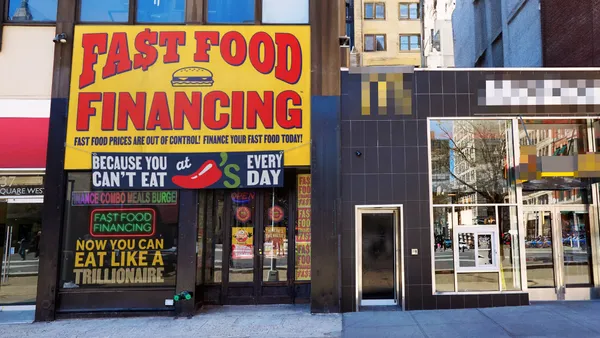This year’s myriad restaurant bankruptcies make it possible to draw many individual lessons about tactics that burdened balance sheets.
But if the filings of bankrupt brands and operators elucidate specific, flawed business practices, like Thai Union Group’s sale-leaseback process at Red Lobster, are there generalizable lessons, given the sheer number of bankruptcies?
2024 offers a surplus of brand cadavers to would-be corporate pathologists: TGI Fridays, Bucca di Beppo, One Table Restaurant Brands, Rubio’s and Tijuana Flats, among many others, all filed for Chapter 11, while Mod Pizza narrowly avoided the same fate.
So what happened?
The short answer is rising prices. Restaurants raised prices 30% in five years, according to Bureau of Labor Statistics Data collated by the Federal Reserve Bank of St. Louis, while overall prices went up 22% and grocery prices went up 27%. Eventually, many consumers pulled back. At the same time, capital became more difficult to raise starting in 2022, when the Federal Reserve began raising interest rates. This tightened the money supply and increased the cost of borrowing money.
Strong brands and concepts, particularly fast casuals that offer significant perceived value, have done very well in this environment. But brands with weaker value propositions, worse unit economics and burdened balance sheets fell behind.
“Even in the best of times, there are still companies that are either stressed or distressed,” Brad Sandler, a partner at the bankruptcy and restructuring law firm Pachulski Stang Ziehl & Jones, told Restaurant Dive.
Sandler said that consumer health overall is strong but that prolonged operational challenges in a thin-margin business like restaurants makes it difficult for companies with a lot of debt to turn things around.
Bankruptcies were more common in “consumer-facing industries that have been adversely affected by the economy,” Sandler said. “From supply chain disruption to rising labor costs to geopolitical tensions there's been a tremendous amount of disruption.”
Local conditions impacted specific brands as well. Rising labor costs associated with California’s $20 fast food wage helped seal Rubio’s fate. Sticky’s Finger Joint was hurt by particularly low foot traffic in Manhattan. Roti’s bankruptcy was hastened by the end of rent deferral agreements. At One Table Restaurants, the parent company of Tender Greens and Tocaya, high commission fees on third-party delivery ate up much of the brands’ recovery from COVID-19.
Franchisee bankruptcies, one of 2023’s most alarming trends, continued apace this year. One Dickey’s Barbecue franchisee filed for Chapter 11 protections as the chain’s store system shrank. Arby’s franchisee Miracle Restaurant Group went bankrupt in the summer after failing to find a buyer for underperforming units. And in casual dining, Louisiana Apple went bankrupt after a creditor sued and Applebee’s stripped it of control of its stores.
With the end of the year approaching and some of 2024 bankrupt chains emerging from the Chapter 11 process with fresh plans for turnarounds, take a look back on some of the year’s most impactful bankruptcies.














